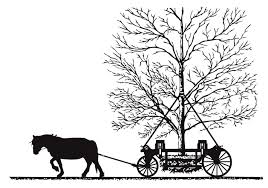A generation ago (1984), the Forest Service clearcut 243,005 national forest acres. Last year, 21,226 acres. These and other eye-popping silvicultural statistics are found in “Harvest Trends on National Forest System Lands, 1984-Present.” [Someone with an ironic sense of humor embedded in HTML code two authors of the anonymous report — “R. Cut” and “T. Sanitation” — which show up on a Google search].
Other notable numbers include the five (“5”) acres clearcut last year across the Pacific Northwest Region’s 17 national forests, down from a high of 81,499 in 1989. Acres commercially harvested (sum of final and intermediate cuttings) totaled 209,289 in 2013, compared to the almost 1 million (902,647) acres cut in 1990.
For those who mis-spent their youth reading or writing FS timber management plans, you’ll be slack-jawed by the commercial thinning numbers — down, down, and down. I recall when many west coast national forests were planning once-a-decade commercial thinning entries on every reforested acre. Ain’t happening. Thinning once a rotation now, at most.
PS: In 1992, CRS forest policy expert Ross Gorte & colleagues took a look at the clearcut acreage numbers and had this to say about the future:
Although the Forest Service has estimated that the 70-percent reduction in clearcutting will reduce harvest volume by only about 10 percent, it is uncertain whether the decline in the area clearcut can continue, or even be sustained, when the [spotted owl] litigation is resolved and the economy recovers, without significant constraints on the volume of timber harvests.
Those “significant constraints” on volume ended up being realized.

Then, there is the fact that since 1993, ZERO acres were clearcut in all Sierra Nevada National Forests, in response to the unlisted California Spotted Owl. Sadly, some folks pretend that it still is happening (just read the comments sections in anti-Forest Service newspaper articles!), trying to end all timber projects. There are also those folks who want to stop clearcutting in Roadless Areas, another accusation that has no basis in fact. Some people want to talk about “virtual clearcuts”, too. Grasping at “eco-straws”, and not letting facts get in the way?
Andy:
It is interesting that this study begins in 1984. Just yesterday I sent out a link to an article I had written about reforestation and intensive timber management on federal lands in Oregon in 1982 — not because of this topic, but because of the balloon logging cover, table of contents, and their ties to the Cottage Grove Stewart family: http://www.nwmapsco.com/ZybachB/Articles/DFR_Reforestation_1982.htm
One of the most interesting things to me is how wrong I was on some of my projections. I’m also curious about my statements regarding such things as a “20-year lag” on private lands logging, which I can check out and where I may have been more accurate than on my pre-spotted owl thoughts on federal forest management.
No one should be held responsible for what they wrote over 30 years ago. Lord alone knows what’s written on page 24 of that same magazine.
One thing you nailed accurately was the decline in U.S. per capita wood consumption. The high water mark was 1986 at 83 cu ft (roundwood equivalent) per person (see abstract). In 2011, per capita consumption was at 47 cu ft. Lots of factors at play, including paper recycling, decline in printed news media, and, most important, the hollowing-out of middle-class home ownership.
I really like this chart. The volume directly translates; but, is the dollar valued at real dollars or doesn’t it take inflation into account? My guess is the second one in which case that value could prove a larger point!
The dollar values are not adjusted for inflation.
Sad.